WPS in Brief: September 2025
Superintendent’s Goals, Back to School, Climate and Culture Specialists, Student Handbook.
Aislinn’s hard work covering the WPS is supported by the readers of this outlet! If you appreciate in depth and nuanced coverage of the goings on in the city’s public schools—the most important thing the municipality does!—please consider a paid subscription to this outlet. The more subscribers, the more we can pay for the good work you’re about to read. —Bill
Welcome to the September issue of WPS in Brief. This month covers key topics from two school committee meetings and two standing committee meetings
Lots to cover, so let’s get to it:
Start of the School Year Report.
The Superintendent’s Report from the September 4 school committee meeting covered the start of school, including facility improvements, teacher retention rate (96 percent), leadership promotions, and that for the second year in a row bus routes got out to families on August 1 (we used to be lucky if we got the routes the Friday before school started). Superintendent Allen reiterated his commitment to building relationships with educators and the community, and reiterated his plans to visit every school building by the end of September.
Allen also touched on enrollment, specifically that initial enrollments overall are higher than last year, but initial kindergarten enrollment is the lowest since the fall of 2020 (last year’s kindergarten class was the largest since before the pandemic). The funding model in Massachusetts is per pupil, which means district funding is allotted based on how many students the district has on October 1 the year before. So the number of enrolled students on October 1, 2025 will decide how much money WPS gets for the 2026-2027 school year. Superintendent Allen highlighted how that October 1 date is truly just a snapshot in time in our district, explaining:
“I want to give an example of how Worcester’s enrollment changes each day using last year’s school data. Between the first day of school last year and October 1 [2024], the district enrolled an average of 125 new students each day, while we also unenrolled 46 students each day during that same period. From October 1 [2024] to the end of the school year last year we enrolled an average of 12 students every day, while we unenrolled an average of 8 students every day. So while we were 24,778 students enrolled in this district last October 1, that was the only day we actually had 24,778 students enrolled in the district.”
This means that last school year the arbitrary October 1 count was a low one. Almost every other day of the year the district was educating more students (and with less money. Remember: they had to cut $22 million that year). As the state approaches the end of the Student Opportunity Act phase in, Superintendent Allen is pointing us to an area where the funding model could be improved.1
Superintendent’s Goals
At the September 18 meeting the school committee unanimously approved the superintendent’s goals for the 2025-2026 school year and overall Superintendent Allen received praise from all the members. The goals will be part of Superintendent Allen’s evaluation next summer, and the process is similar to how other school administrators are evaluated, with a key difference that the superintendent is evaluated by a collection of people (the committee) and it’s done in public meetings. Superintendents are required by the state to have three goals: one district goal, one student goal, and one professional goal. (You’ll see that Allen actually has 3 district goals.)
The student goal is:
Star is what the district calls a “universal screener” and looks at reading achievement data, giving a broader review of how children are reading at grade level. The reason Kindergarten and grade 1 aren’t included is because the district uses DIBELS and the star early literacy screener for grades K and 1. Allen said he believes the 3 percent increase is realistic given targeted instructional strategies, data driven interventions, and ongoing progress monitoring. Just a reminder that the factors that most influence proficiency rates with assessments like these (Star, MCAS, etc.) are factors outside a district’s control: family income, language spoken at home, and parents’ education. As the new commissioner of education said in April: “I always have this caveat: the proficiency rates that are in our schools are a reflection of the poverty in that community. The growth you see, that’s a reflection of the practices in the schools. And that’s where you hold people accountable.” If you want to get your student’s Star scores emailed to you, check out this footnote.2
The first district goal is:
There’s no denying that communication from the district has improved significantly since 2022, and the district definitely deserves all the flowers for that. But there’s always room for growth and I appreciate the work towards continuous improvement here. Superintendent Allen emphasized that two of the guiding principles of his entry plan are “unified leadership” and “transparency” and that consistent internal communications is essential for that work. External communications will be focused on using diverse formats and also streamlining messaging.
The second district goal is:
This initiative is apropos, given it’s coming from the first Superintendent to graduate from WPS in 60 years. While specific details are still being worked out, Allen said, “We can develop a sustainable program that leverages early college and new pathway opportunities to engage and retain Worcester students in a teaching career.”
The third district goal is:
The idea that the district will need to look at school boundaries and make adjustments has been consistently mentioned at school committee meetings since at least 2023, but this is the first time there’s been any concrete plans and details. I think the goal is self-explanatory, but basically some schools are over capacity and some schools are under capacity, and the hope is to balance it out as much as possible, while also aligning quadrants (as an example, students who attend Chandler Elementary are assigned to three different middle schools). As demonstrated by this chart showing enrollment by school and by class from the spring of 2025, enrollment by grade fluctuates greatly even within a school, and why the district plans to hire a vendor to help with the process. Here’s the proposed timeline timeline for the process:
It has been decades since school boundaries have been comprehensively reassessed in Worcester and in an email Superintendent Allen emphasized “One of the things that we will fully consider is to allow existing students to have legacy enrollment at their current school, to the best extent possible. This project will not be a complete disruption or reshuffling of the district; we see it more of a targeted analysis of certain street assignments and program locations.”
And finally the professional practice goal is:
Superintendent Allen emphasized that researcher John Hattie has shown through meta analysis that collaborative teaming is one of the most impactful strategies for improving student learning. This goal aligns with the “equitable resources and programs” key priority of the strategic plan.
Along with his goals, Allen also highlighted other priorities for the year:
In connection to the strategic plan, the district has launched (or is launching) working groups in these areas. Allen emphasized to the committee that these goals and focus areas are ambitious, but doable to give students the education they deserve. The Superintendent will report on his goals at the mid-year mark (usually December) and again at the end of the year (in June), when he will be evaluated by the committee.
Other Bits and Bobs.
Grading policy. The mastery based grading policy, which the district hoped to roll out in high schools this school year, was held in the teaching, learning, and student success subcommittee while negotiations with the teacher’s union continue. According to conversation at the meeting, teachers came back from summer break to learn that Woo Edu had grading percentages pre-set and they could not be changed, despite the school committee not passing a new grading policy.
At the September 4 meeting the committee voted to cancel the November 6 meeting, because it’s right after the election. The vote was 6-1, with Sue Mailman voting no and Molly McCullough and Kathi Roy absent. There will be only one school committee meeting in November, so the committee shifted each Report of the Superintendent back one meeting, and then removed the last one which was titled “Student Voice.”
The Finance, Operations, and Governance subcommittee approved the Gene Haas naming at Worcester Tech at their September 8 meeting, where they disclosed that a naming committee met on August 29 per the new school committee policy. There was not a public meeting notice as required, and an open meeting law violation was then filed by Nicole Apostola. The naming committee then posted the meeting and met again on September 24 at 10:30 a.m. There were no members of the public in attendance.
Meeting Moment.
At the September 18 meeting the committee discussed an item brought by Sue Mailman (at-large) around training bus drivers in restorative practices and/or putting climate and culture specialists on some buses to help with discipline for those that may have the need. Superintendent Allen reiterated the district’s policy that bus drivers cannot discipline, and that it’s the responsibility of individual school administration, pointing out that sometimes principals or assistant principals ride the bus when necessary. Dianna Biancheria (district C) said that, given the discipline data report for 2024-25, “I want [climate and culture specialists] in our schools, I want them in our hallways, I want them working with our kids close in our schools and our staff in our schools.”3 This is a strange turnaround for someone who just last year called climate and culture specialists “glorified bouncers” and condescendingly spoke about their work. So much so, that Jermaine Johnson was momentarily at a loss for words before calling out the insensitive remarks. Your guess is as good as mine as to where Biancheria’s sudden support for climate and culture specialists comes from.
A new parking lot.
In today’s episode of ‘tell me it’s election season without telling me it’s election season,’ you may have seen coverage in the papers of a ribbon cutting to open a parking lot at Roosevelt School. A ribbon cutting. For a parking lot. One that cost over $2 million dollars. (Fwiw it did include some sidewalks, too). The project was covered by a $1 million federal community block development grant, $650,000 from the WPS capital improvements budget (about 14 percent of the budget for the year) and the land was purchased by the City for $450-$600K (depending on the reporting) in 2020.
The new Roosevelt parking lot is a case study in politicians trying to solve a problem in a vacuum. City council bought land without consulting the district or the school committee, assuming that it could simply just be paved over into a parking lot (spoiler, it couldn’t). No one asked the district if this land was, in fact, the best solution to the issue, or whether there was money in the district’s capital budget to make the new land useful. Not once did a city councilor ask which much needed capital project at another school would be bumped so that Roosevelt could have a new parking lot, but they did, however, criticize the district for taking so long to complete the project.
Today, according to a district spokesperson, Roosevelt School averages about 170 cars going through the student pickup line (student enrollment is about 600). Lining up 170 cars is about the length of 7 soccer fields. Interestingly, not a single one of the outlets that covered the opening of the parking lot talked to parents or caregivers about why they pick up their kids instead of walking or taking the bus.4 To me, that is the issue to solve. But instead, the city council continues to prioritize piecemeal constituent services over working with the district to solve big picture issues.
Recommended Read.
Read The Student Handbook! There’s a new update this year that says that sending your kids to school “confirms that families and students are aware of the policies in the WPS Student Handbook.” There’s a lot of helpful information in there, and it’s the main way the school committee updates policies. Some changes this year include an updated enrollment policy and an updated homework policy. Props to the communication team (Kyle, Anca and Aurella) for their work making the handbook more accessible, easier to read, and better formatted. It’s a noticeable difference this year.
Upcoming dates.
All school committee meetings have virtual options with Spanish translation, see the school committee site for more information.
Citywide Parent Planning Advisory Council October 8, 6:30-7:30 p.m.
School Committee meetings are October 9 and October 23, 6 p.m.
Finance, Operations and Governance is October 6, 5 p.m.
Teaching, Learning and Student Support is October 16, 5 p.m.
Also.
Last month I was seriously considering not writing this Brief anymore, and then someone randomly came up to me at NuKitchen to tell me how much they appreciate it, and all the ways it’s allowed them to be informed and advocate. And so here I am, still writing. I’m telling you this because so many people in Worcester are doing a lot of work in our community to support each other, and a lot of it is unpaid. Letting them know that you appreciate them goes a long way and reminds us how much we’re connected to each other. So my homework for you is to tell someone you appreciate the work they’re doing. There’s so much good happening in this city, let’s celebrate it.
Thanks for reading. See you next month!
If you want to see stats on mobility rates, including churn and stability check them out here. You’ll notice the top districts with the highest percentage of churn are all charter schools, including the new Worcester Cultural Academy.
To get your student’s Star scores emailed to you when they take them, login to their Clever account and then click on the Renaissance app. If you scroll to the bottom it says “For parents and guardians” and click “get email updates.”
The discipline data Biancheria refers to doesn’t differentiate instances that happened on the bus versus instances that happened in school. School committee members might consider asking for that data, as well as differentiating between elementary school and secondary school.
Are families concerned about letting kids walk to school as drivers continue to speed and be distracted by phones? Is it a lack of sidewalks? Of people not shoveling their sidewalks in winter? Do families still think the buses aren’t efficient? Or safe? Are there more school choice kids at Roosevelt who don’t qualify for the bus? I know the school and the district have been having these conversations, but have the politicians? Not in any public meetings I have seen.


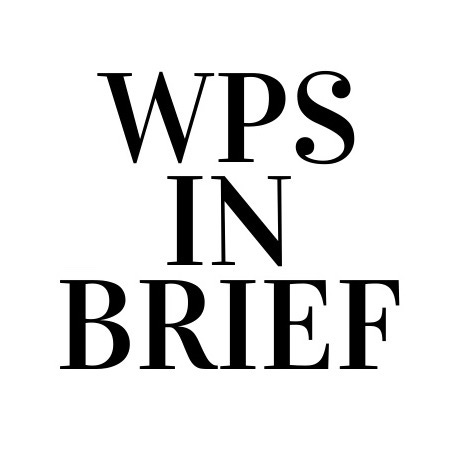
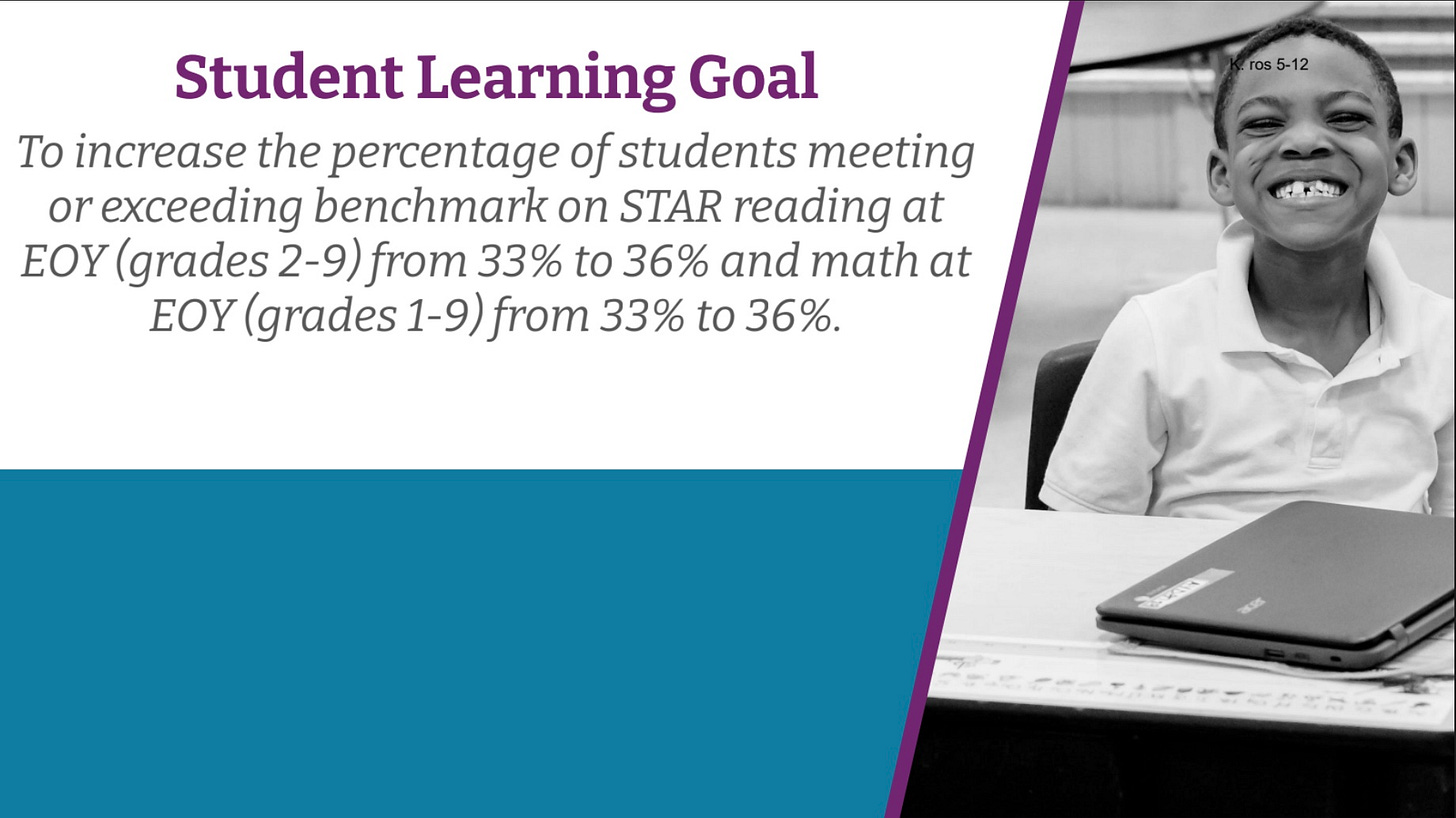
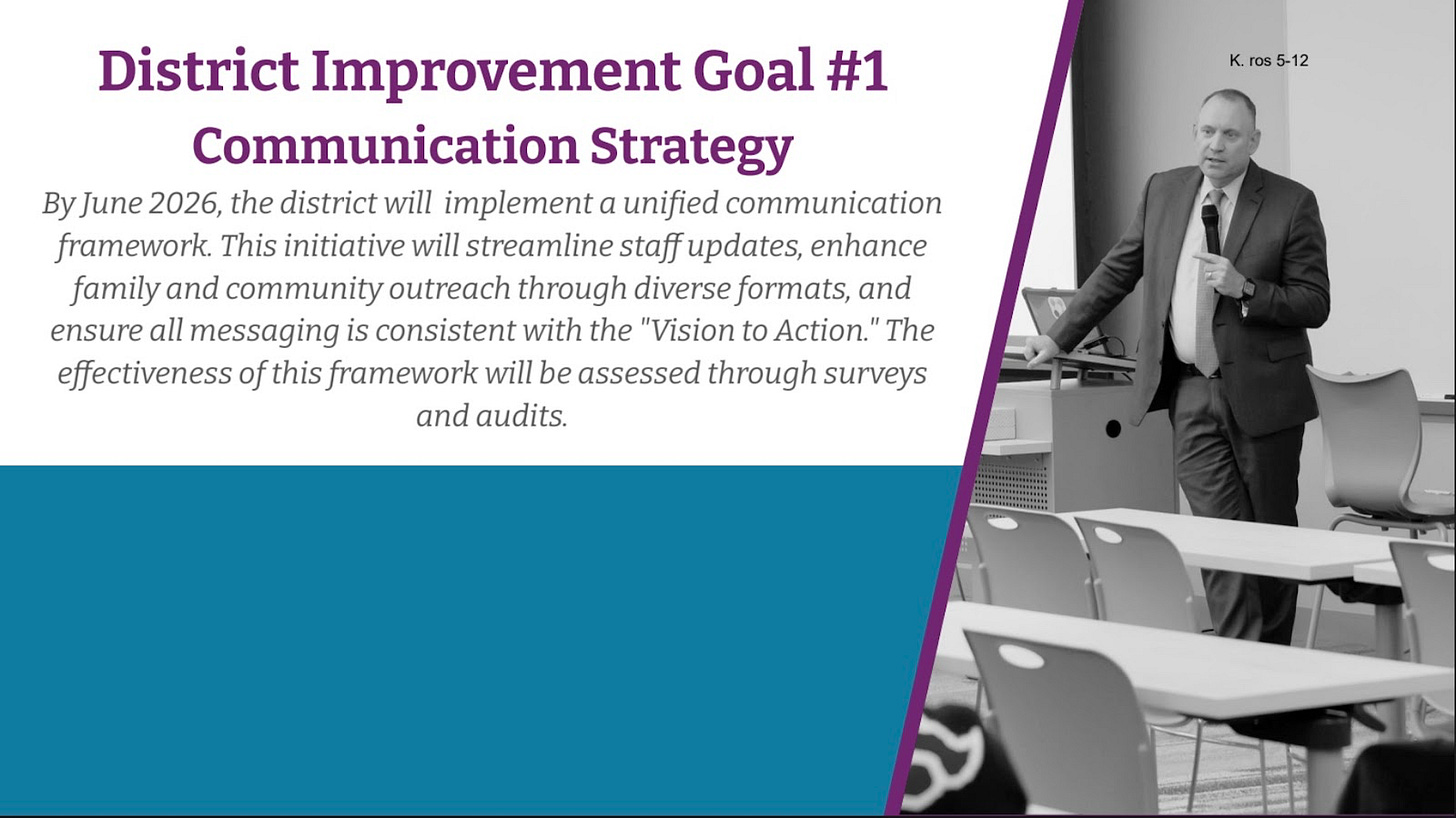
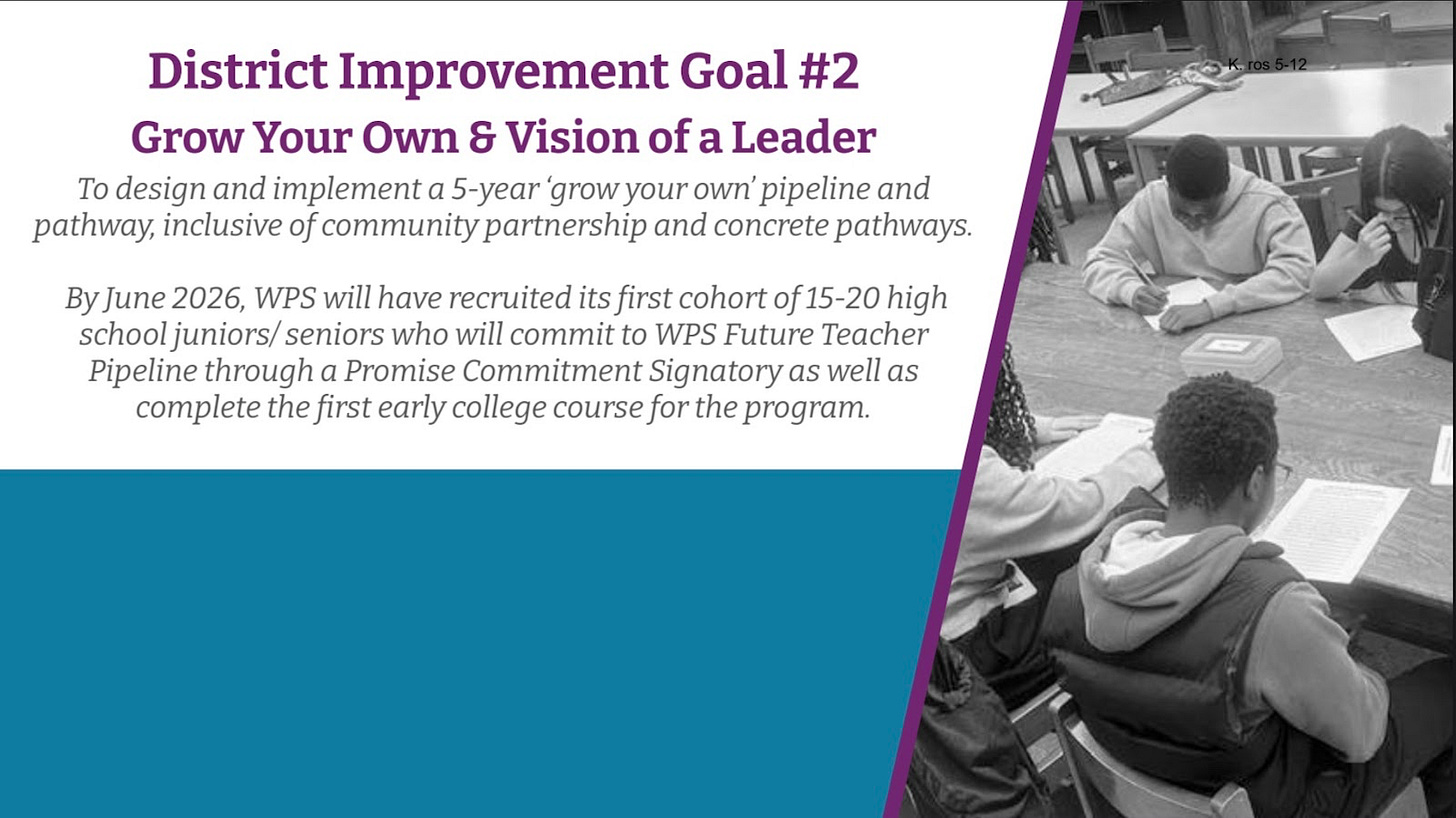
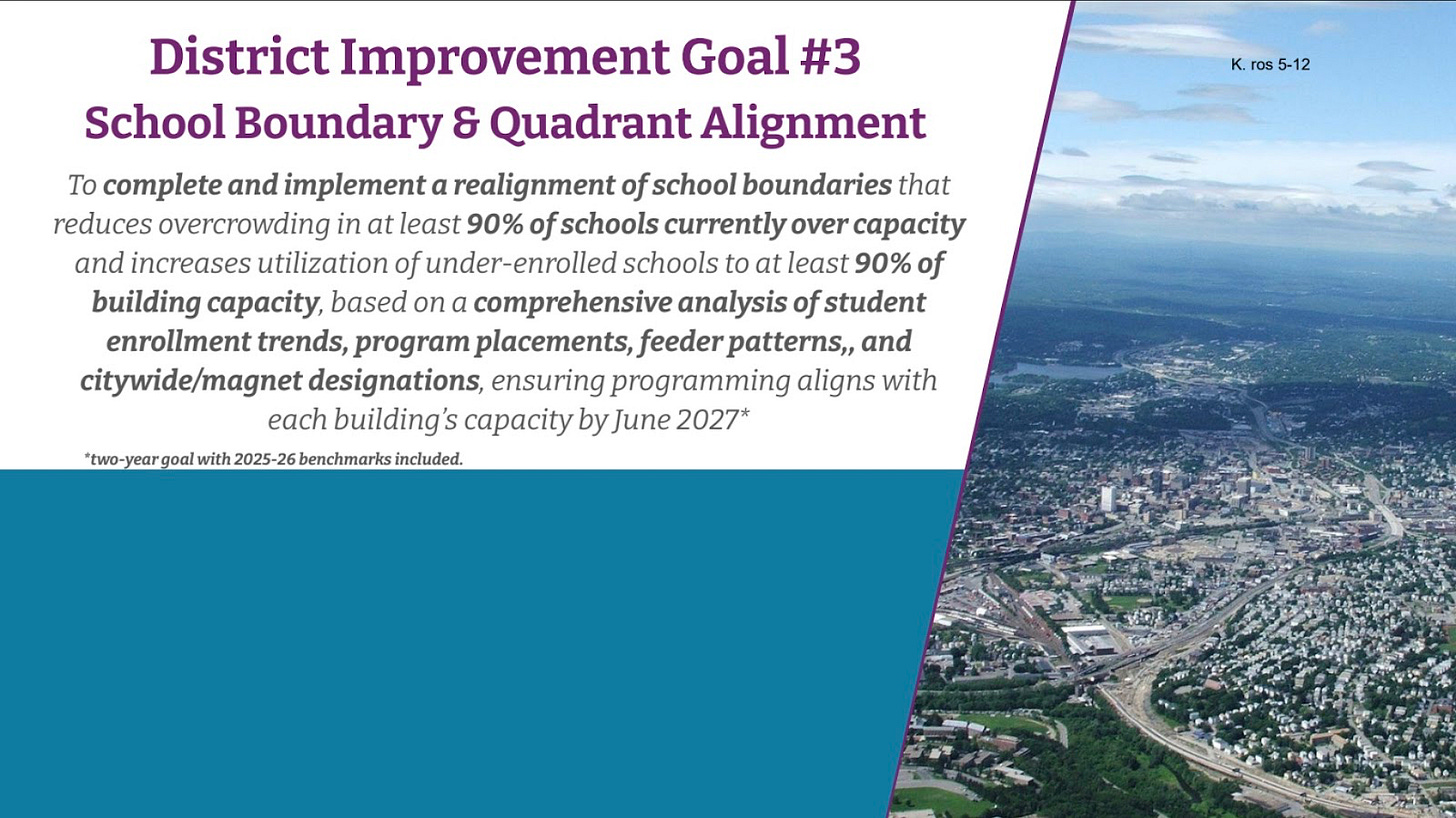
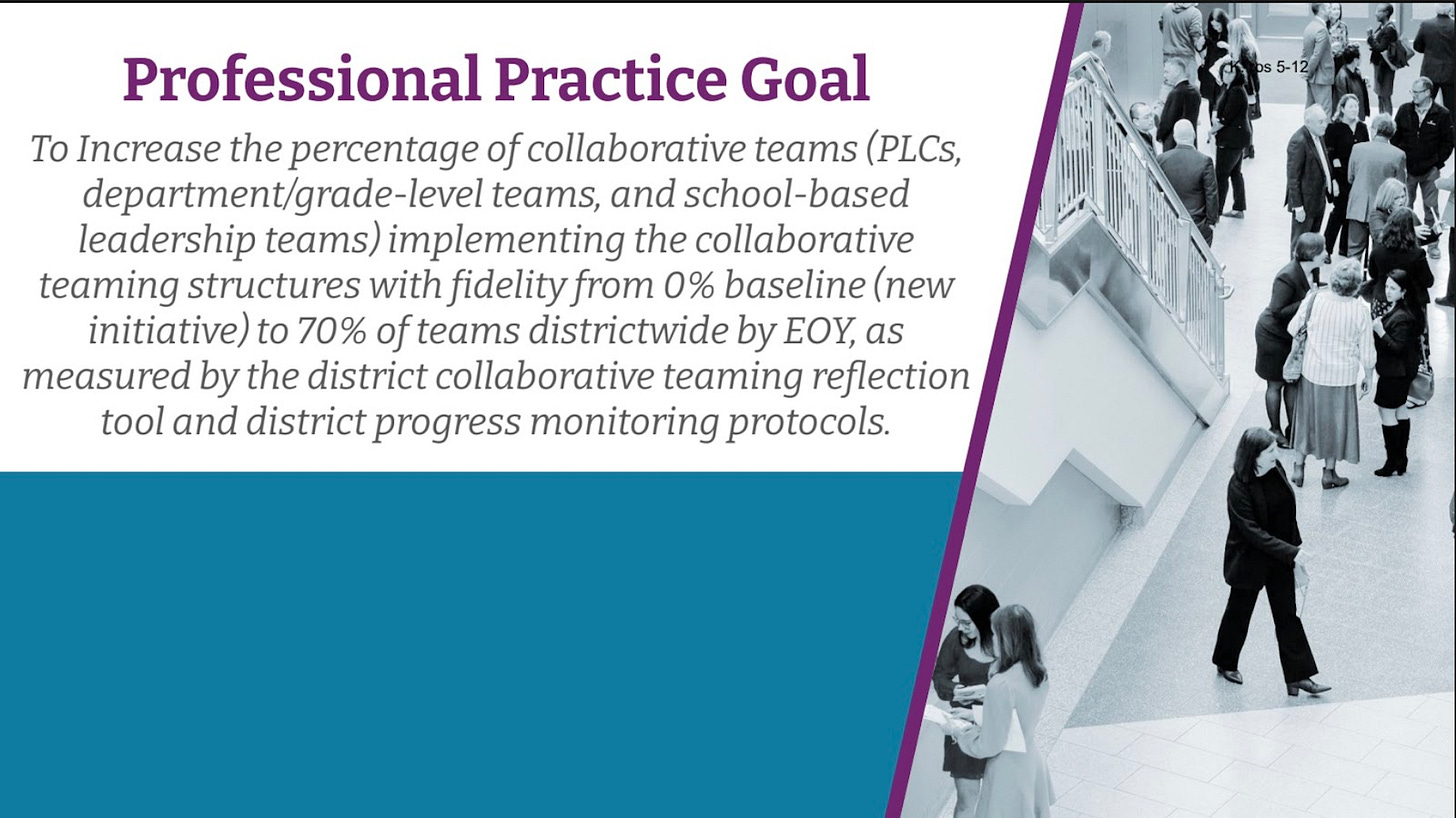
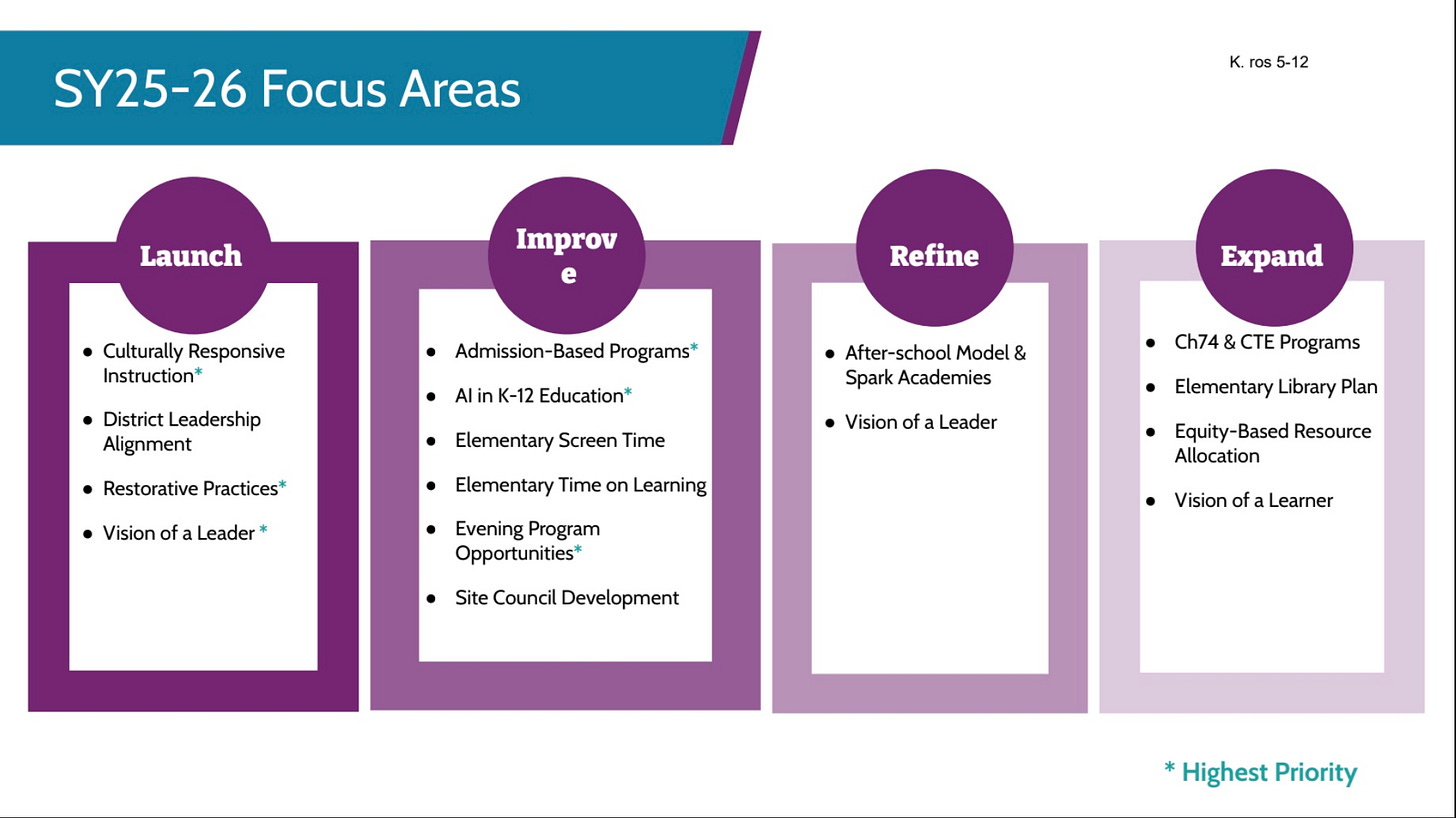
Yes, thank you for being our eyes, ears, and critical thinking! Yeah, there were no hints re: the larger issue re: Roosevelt School in the other coverage, except for maybe the hint suggested by the coverage of Batteries Unlimited vs. parents pickup lineup.
I always love your newsletters, Aislinn – so informative! Thank you. Superintendent Allen’s explanation highlights how the 10/1/24 snapshot undercounted Worcester’s real enrollment. On 10/1/24 the district reported 24,778 students, but from then until the end of the school year Worcester grew by a net four students for EACH school day.
Using the state’s 180-day school year, that daily gain works out to the equivalent of 362 additional students as of 10/24, about 1.46% more than the 10/1 snapshot. With roughly $350 million in state aid, that translates to about $5.1 million in underfunding. That’s a lot for our Worcester schools -- it's many positions cut when we need them more!
Has there been any discussion with Senator Kennedy or the state about revising the state funding practice to reconcile funding in the following year so that districts are credited for undercounts (or debited for overcounts)? As long as we rely on a single day’s headcount, Worcester and districts like us will carry more students than the state recognizes/funds and so we'll be underfunded for doing so and likely feel forced to fire teachers. Why not adjust next year’s funding to make it fair, one way or the other?